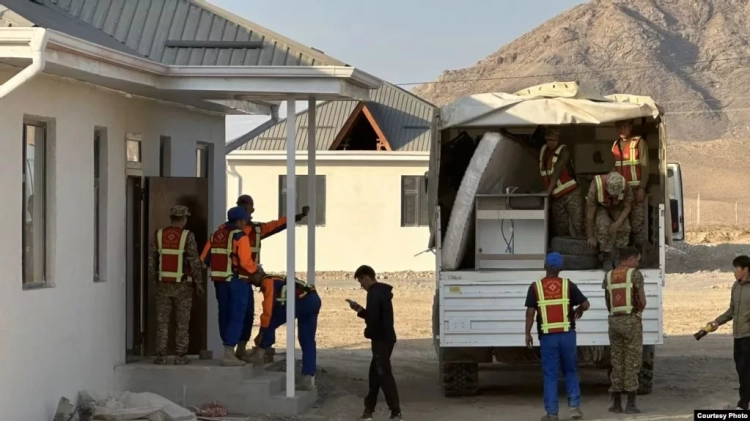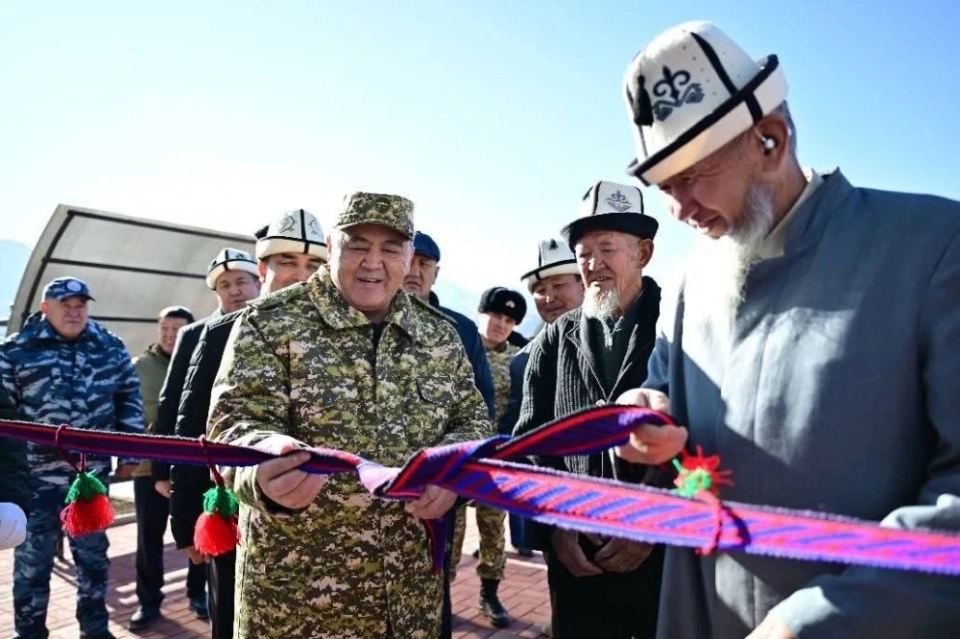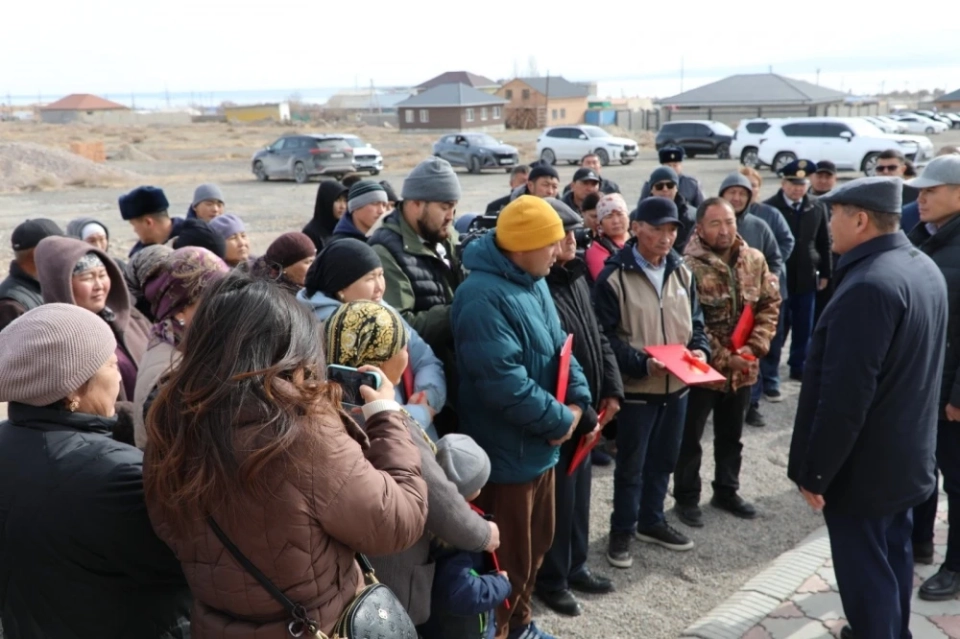The Chairman of the State Committee for National Security, Kamchybek Tashiev, met with residents of...
At today's 91st meeting of the Council of Commanders of the Border Troops of the CIS in Manas,...
At the border between Kyrgyzstan and Tajikistan, border guards may soon disappear, stated Kamchybek...

“The main task is to ensure friendly relations and mutual understanding between our peoples” The...
At a meeting with residents of the Chon-Alai district in the Osh region, Kamchybek Tashiev, head of...

Negotiations are underway regarding the delimitation of state borders between the governmental...
The process of demarcating the border between Kyrgyzstan and Tajikistan is at its final stage, as...

The administrative-territorial demarcation of the republics of the former USSR predetermined the...

Vice Prime Ministers of Kyrgyzstan and Tajikistan to Discuss Border Issues Today, another joint...
In the Batken region, the process of relocating residents from border villages adjacent to...

According to the information, the construction of 181 residential houses has been completed in the...
At the climate summit taking place in Belém, the Federative Republic of Brazil, Deputy Prime...
In the Batken region, in the village of Pasky-Aryk, which borders Tajikistan, work has begun on the...
The Deputy Chairman of the Cabinet of Ministers and Head of the State National Security Committee...
Edil Baisalov, serving as the Deputy Chairman of the Cabinet of Ministers, held talks with the...
On October 30, during a working visit to the Jalal-Abad region, Deputy Prime Minister and head of...
In Naryn, on October 23, during his working trip, Deputy Chairman of the Cabinet of Ministers and...
Balykchy will receive 1.5 billion soms for development. This information was announced on October 6...

At the state border of Kyrgyzstan and Uzbekistan, 1400 square kilometers of area are subject to...
On October 30, the grand opening of the new three-story building of the children's creativity...
The Deputy Prime Minister and Head of the State Committee for National Security, Kamchybek Tashiev,...
The Deputy Prime Minister and head of the State Committee for National Security, Kamchybek Tashiev,...
During his working visit to Balykchy on October 6, Deputy Chairman of the Cabinet of Ministers and...

“Creating difficulties for citizens” Quality service for citizens, especially in the energy...
On October 30, at the opening of the reconstructed facility, Deputy Prime Minister Kamchybek...
In Manas, employees of the municipal enterprise "Vodokanal" will soon receive a salary...
During the solemn ceremony on October 31, dedicated to handing over the keys to mortgage apartments...
At the event dedicated to the Days of Russian Culture in Kyrgyzstan, the Chairman of the Cabinet of...

A ceremonial event took place in the Osh region, where keys to new service apartments were handed...
In the Batken region, specialists from the Regional Department of the State Architectural and...
In Tash-Kumyr, the construction of a new modern building for the city hospital is planned, reported...

Uzbekistan will no longer claim the disputed area of Unkur-Tuu In return, Kyrgyzstan will open air...
Kamchybek Tashiev, holding the position of Deputy Chairman of the Cabinet of Ministers and Chairman...

The history of the formation of the modern Kyrgyz-Chinese border dates back to the second half of...
In the Batken region, the resettlement of residents whose lands will be transferred to Tajikistan...
In Manas, on the territory of the old airport, the construction of a new stadium is planned, as...
As part of the session on "Ten Years of the Paris Agreement: National Contributions and...
The Deputy Prime Minister and head of the State National Security Committee, Kamchybek Tashiev,...
The Deputy Head of the Cabinet of Ministers, Kamchybek Tashiev, addressed energy workers with a...

The conflict between Kyrgyzstan and Uzbekistan over the disputed border territory in the...
In Naryn, a ceremony was held to open a wrestling hall named "Munduz Ata," which was...

The Deputy Prime Minister of the Kyrgyz Republic and head of the State National Security...

As part of his working trip on November 6, 2025, Colonel General Kamchybek Tashiev, who holds the...
At a meeting with the residents of Balykchy, held on November 6, the head of the State National...

Tamga-Tash. At an altitude of 1684 m, in a beautiful old park on a steep cliff by Lake Issyk-Kul,...